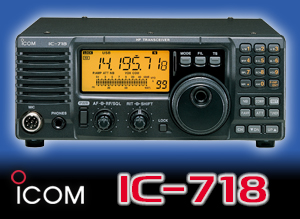Propagation News – 26 October 2025
It looks like Earth dodged a bullet last week when a large coronal mass ejection, or CME, erupted on the far side of the Sun on Tuesday, 21 October.
Had that CME been Earth-directed we could have endured a strong, or possibly an extreme, geomagnetic storm with dazzling displays of aurora. The source of the eruption was possibly sunspot region 4246 which is now past the Sun’s west limb.
The ACE spacecraft detected high levels of protons streaming past Earth, but they remained below the minor S1 radiation storm threshold.
In other news, we have had a quiet geomagnetic week which has allowed the ionosphere to shine. The solar flux index has been modest, ranging from 130 to 150, but propagation has been aided by improved geomagnetic conditions.
During the past week, the 10m band was humming with activity. Lots of stations were preparing for the CQ World Wide SSB Contest which ends today, 26 October.
8P5A in Barbados has been romping in during the afternoon, as has HZ0YL in Saudi Arabia.
Other DX worked last week, according to the CDXC Slack chat group, includes VK9DX on Norfolk Island on 12m SSB; 6O3T in Somalia on 40m CW; and PJ6Y on Saba and St Eustatius using SSB on the 12m band. This last station is a young radio amateurs’ DXpedition by the Pacific Island DX Group.
Next week NOAA predicts that the solar flux index will stay in the 140 to 150 range with the Kp index starting the week low but then rising. We may expect a Kp index of 5, or even 6, around the 28-31 October. Look for auroral conditions and lower maximum useable frequencies during this period.
Meanwhile, make the most of the long-range propagation on the higher bands while the Kp index is low.
VHF and up propagation news from G3YLA and G4BAO
The period of weather up to the end of the week ending 2 November looks distinctly unsettled with the weather pattern driven by an Atlantic jet stream pointing straight at the British Isles.
This will mean that further periods of stormy weather are possible with strong winds and heavy rain. This is not a time to expect much tropo for VHF or UHF but is a good period for the GHz bands to explore rain scatter propagation.
The foF2 and foEs graphs at propquest.co.uk have been experiencing some data supply issues recently. It’s worth noting that strong jet streams and fast-moving weather systems, as we have now, can bring a chance of out-of-season Sporadic-E.
A good example on the evening of Sunday, 19 October can be found if you check the archive tab. This four-hour active period was possibly associated with a slowly advancing jet stream as seen on the Sporadic-E blog tab for that date.
Meteor scatter operators had the Orionids, which peaked on 22 October , to play with last week. The broad zone of activity may continue to provide weakening interest through the coming week.
The Kp index has been relatively subdued recently but the message is once again to continue to monitor for the chance openings by noting when the Kp index reaches 5 or more, or if you start to hear LF CW signals take on a fluttery note.
For EME operators, the Moon’s declination is at a minimum today, 26 October, so Moon window lengths and peak elevation are both low. Apogee was early on Friday, 24 October, so path losses are falling again. 144MHz sky noise rises over the weekend, reaching some 3300K today, 26 October, before falling steadily to low levels the following Friday.
Category: GB2RS Propagation News










